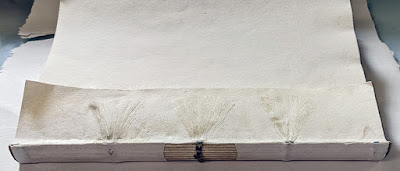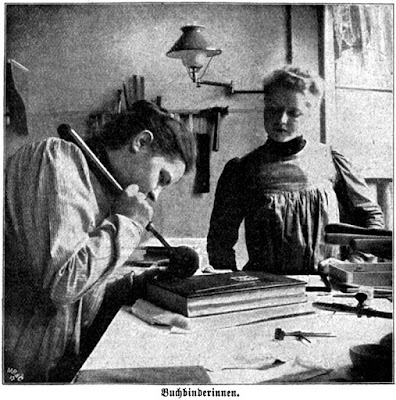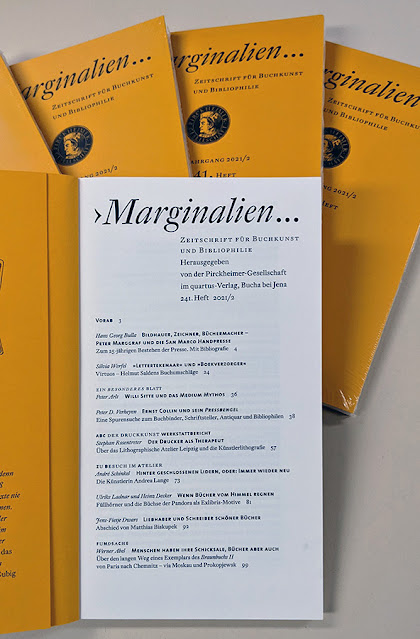A looooooong time ago, not to long after I started this blog, I introduced the Aufschabebelch, a simple tool that one could purchase or make one's self. Below an image of it, also in use from 1806.
 |
| From plate II of Hendrik de Haas' De Boekbinder, 1806. Fig 8. Het opvlas planje. Fig 9. Het opvlasten der banden. (PDF pg 174-76) |
They were usually made of tin and the one I am most familiar with was shaped like in the image below. Why that shape and hole configuration? It's not explained, but is pretty much identical to the one I used as an apprentice in the mid 1980s.
 |
From Paul Kersten's Die Buchbinderei und das Zeichnen des Buchbinders ... (Halle a.d. Saale, 1909), plate 1. |
 |
| Attaching the boards in the German Franzband tradition. From from Wiese's Werkzeichnen für Buchbinder..., (Stuttgart, 1937). |
Recently, I was invited to give a workshop on what I call the Ur-Bradel, the German Pappband structure that over the course of the centuries morphed into various flavors, often national, and of which all seem to have slightly different understandings. I won't get into those here, but in that structure, if the book was sewn on recessed cords, those cords were frayed out, paste was applied (often hide glue was applied to the guard (Ansetzfalz)), and then they were fanned out smoothly. The benefit was that this process resulted in sewing supports that were almost invisible under the endpapers when the book was done. That was the theory, because the extent to which the cords were frayed and fanned out varied by skill or time pressure.
The image below is from a cutaway model I making of one of these Ur-Bradels, ca 1800 and shows the cords frayed out and put down on the guard. The next step would be to attach the spine piece to the guard, then the boards, but I digress.
 |
| Fritz Otto did ok... Not atypical. |
 |
| Fritz Otto showing off the two fray shield prototypes. The shape is different from the one in German manuals... Will it matter? |
 |
| Another view. The dimensions of the bottom one were what I asked for, with a heavier steel used. The top, Jeff's reinterpretation. In the end, I really liked Jeff's reinterpretation more. You can even order your own from him now! |
 |
| After teasing the fibers of the cord apart, they are slipped into the notch and a bookbinders' knife are used to finish and make them silky smooth. |
Below a video in which I try out both to see which I liked better. There is no sound or narration.
 |
| Holding his "right-sized" Aufschabeblech. |
 |
| Fraying out the cords... |
 |
| Brushing the hide glue onto the guard... |
 |
| Fanning out the frayed out cords on the guard. |



































